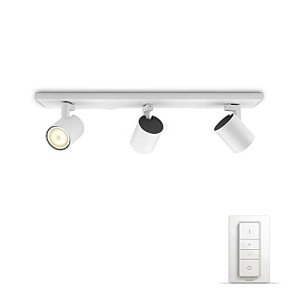How To Outsmart Your Boss On Interior Lighting UK

Interior Lighting in the UK: A Comprehensive Guide
Interior lighting plays an essential function in developing an environment, enhancing performance, and expressing personal style within homes and services. In the UK, where the weather condition can be unpredictable, effective lighting is not just about aesthetic appeals however likewise about making spaces feel warm, welcoming, and practical. This article digs into different elements of interior lighting, incorporating types, trends, pointers, and often asked questions.
Understanding the Importance of Interior Lighting
Lighting is frequently thought about the backbone of interior style. It affects state of mind, functionality, and the perceived size of areas. The right lighting can:
- Enhance the architectural features of a room.
- Highlight artwork and design.
- Improve safety and security.
- Impact performance in work spaces.
- Create a comfy atmosphere for relaxation.
Kinds Of Interior Lighting
Reliable lighting design usually includes 3 primary types of lighting: ambient, task, and accent.
1. Ambient Lighting
This is the main source of light in a room, providing total illumination. Typical sources include:
- Ceiling-mounted fixtures
- Chandeliers
- Recessed lighting
- Soft wall sconces
Ambient lighting produces a structure from which other lighting types can build on.
2. Job Lighting
Task lighting concentrates on particular locations to facilitate activities such as reading, cooking, or working. This kind of lighting helps to reduce eye stress and can dramatically impact functionality. Typical sources include:
- Desk lamps
- Under-cabinet lights in kitchens
- Reading lamps beside beds
- Track lighting targeted at work surfaces
3. Accent Lighting
Accent lighting includes drama and highlights particular items or locations, such as art work or architectural features. This type of lighting can create visual interest and depth in an area. Sources include:
- Picture lights
- Decorative lamps
- Uplighters
- LED strip lights along shelves
Utilizing a combination of these lighting types can cause a healthy and multifunctional area.
Popular Lighting Trends in the UK
The interior lighting landscape in the UK continues to develop, affected by style patterns, technology, and consumer choices. Here are some popular trends to see:
- Smart Lighting: The advent of smart technology has actually changed how people handle lighting in their homes. Smart bulbs and systems like Philips Hue permit users to control brightness and color temperature via their mobile phones.
- Minimalist Designs: Sleek, easy designs that blend perfectly with interiors are controling the market. Pendant lights with fragile frames, LED strips, and geometric shapes are especially fashionable.
- Industrial Lighting: This trend showcases raw, discovered materials. Metal fixtures and Edison bulbs offer a vintage touch that is both elegant and practical.
- Eco-Friendly Options: With increasing awareness of sustainability, numerous consumers are turning to energy-efficient LED choices and fixtures made from sustainable materials.
Tips for Effective Interior Lighting Design
Creating a reliable lighting plan requires thoughtful consideration of various factors. Here are some suggestions:
- Consider the Purpose of Each Room: Every space has a various function. Consider what activities will occur and what type of lighting will support those activities.
- Layer Lighting: Employ multiple types of lighting within a room to create depth and flexibility. Combine ambient, job, and accent lighting to improve both looks and performance.
- Use Dimmers: Dimmers permit control over brightness levels, enabling users to change lighting according to state of mind and time of day.
- Integrate Natural Light: Make the most of natural light sources like windows. Usage light, reflective colors for walls and furnishings to optimize brightness.
- Consider Color Temperature: Different color temperatures (determined in Kelvins) develop various atmospheres. Warmer temperatures (around 2700K-3000K) are comfortable, while cooler temperature levels (4000K+) lend a more clinical or energetic feel.
Interior Lighting Mistakes to Avoid
To create a well-lit space, it's vital to prevent typical lighting pitfalls. Here are some errors to view for:
- Underestimating Wattage: Insufficient wattage can lead to dim, unwelcoming spaces.
- Ignoring Scale: Fixtures that are too little for a room can watch out of place, while oversized fixtures can overwhelm an area.
- Over-reliance on Ceiling Lights: Relying solely on overhead lighting can develop uninviting shadows; balance with extra lighting types.
- Poor Placement: Misplaced lights can create locations that are too intense or too dark. Strategy placements thoughtfully.
Frequently asked question Section
1. What is the difference between warm white and cool white light?
Warm white light (2700K to 3000K) develops a cozy, inviting environment, best for living rooms and bedrooms, while cool white light (4000K to 5000K) is more fit for work areas as it enhances concentration and clarity.
2. How can I optimize natural light in my home?
To make the most of natural light, use light-colored walls, strategically place mirrors to reflect light, and opt for sheer window coverings that enable sunshine to go through.
3. How do Buy Spotlights UK choose the right lighting fixture?
Think about the size of your area, the design of your decoration, and the function of the area. Guarantee the scale of fixtures complements the room and matches the total visual.
4. Are LED lights much better than traditional bulbs?
Yes, LED lights are more energy-efficient, have a longer life-span, and can supply a variety of color temperatures, making them a more sustainable lighting option.
5. What should I do if specific areas of my room stay too dark?
Think about including additional job or accent lighting to brighten those locations. Floor lamps, wall sconces, or perhaps tactically put table lamps can help minimize dark spots.
Interior lighting is a vital aspect of home and service style throughout the UK. Understanding the various types, existing trends, and best practices can help residential or commercial property owners in producing areas that are not just elegant but also functional. With thoughtful consideration and planning, reliable lighting can change any environment, improving both ambiance and usability for years to come.

